Can you please introduce yourself to the reader and explain what Pallant House is, including the Community Programme?
We are Lucy Padley and Emily Robson and we job-share the role of Community Programme Manager.
Pallant House Gallery is a modern art gallery in the historic city of Chichester, West Sussex. The Gallery’s exhibitions share the story of British art from 1900 to present day. There is a programme of changing temporary exhibitions with loans from institutions and collections worldwide, alongside displays that explore works from the Gallery’s extensive permanent collection. The Gallery’s collection is home to over 5000 objects, including works by artists such as Henry Moore, Barbara Hepworth, Graham Sutherland, Walter Sickert and Rachel Whiteread.
The Community Programme was founded in 2002 to ensure the Gallery offered opportunities that were inclusive and accessible to all. We currently have 200 members and our offer includes 8 weekly creative workshops, the pioneering ‘Partners in Art’ Scheme, regular art trips and exhibition opportunities.
The programme is open to anyone who has a support need and doesn’t separate people into sessions based on labels. Our members are artists, first and foremost. We want everyone to be able to access a creative life and the Community Programme helps us to achieve this. Sessions are based on an individual’s artistic interests and each member experiences a unique, personal creative journey. The programme we offer is distinctive because it fosters long term creative opportunities and relationships, with people choosing to continue with the programme for as long as they wish.
How have you experienced the power of art and culture to create community in this setting?
The Community Programme has created a space where, for the past 22 years, hundreds of people who may otherwise not feel included in a museum or gallery programme have been able to fully partake in a creative life and access the Gallery.
Seeing firsthand the impact of living a creative life is powerful; individuals are empowered to pursue their own creative interests, exhibit their art and make meaningful connections, both with likeminded people and with the Gallery space itself. The experience people have at the Gallery through the Community Programme can simply change the trajectory of someone’s life.
Here is how one member has described their involvement. “I have been able to engage with art and my artistic self for the first time in years, which has been so amazing for my sense of wellbeing. The Gallery and the Community Programme is like a sanctuary and a total lifeline. I feel each time I come I am building on these positive experiences. I think these experiences spill over into more of my everyday life and the positivity grows.” (Community Programme Member 2024)
How have you established an accessible and inclusive environment for creative practice?
The Gallery supports the social model of disability and has a certain responsibility as an organisation to offer both the physical space and a programme that meets the needs of all its visitors.
The Community Programme has grown organically over the past 22 years to reflect the evolving and increased needs of our local community. It is testament to the Gallery’s long term vision and commitment to funding that this has happened.
One of the ways we have created an inclusive space is the way we try to listen and respond to people’s individual needs. We build time and space into our work to facilitate this, such as annual reviews with individuals and always being available for a chat. If people feel respected and valued, they feel secure and confident to develop as an artist. This, of course, is different for everyone and we have no fixed agenda or set outcome.
One of the most satisfying aspects of our role is to see artists who perhaps joined with very low self-esteem or confidence to get to a point where they feel confident exhibiting their work. We try to offer a range of exhibition opportunities that include everyone whilst also enabling people to grow and develop as individual artists.
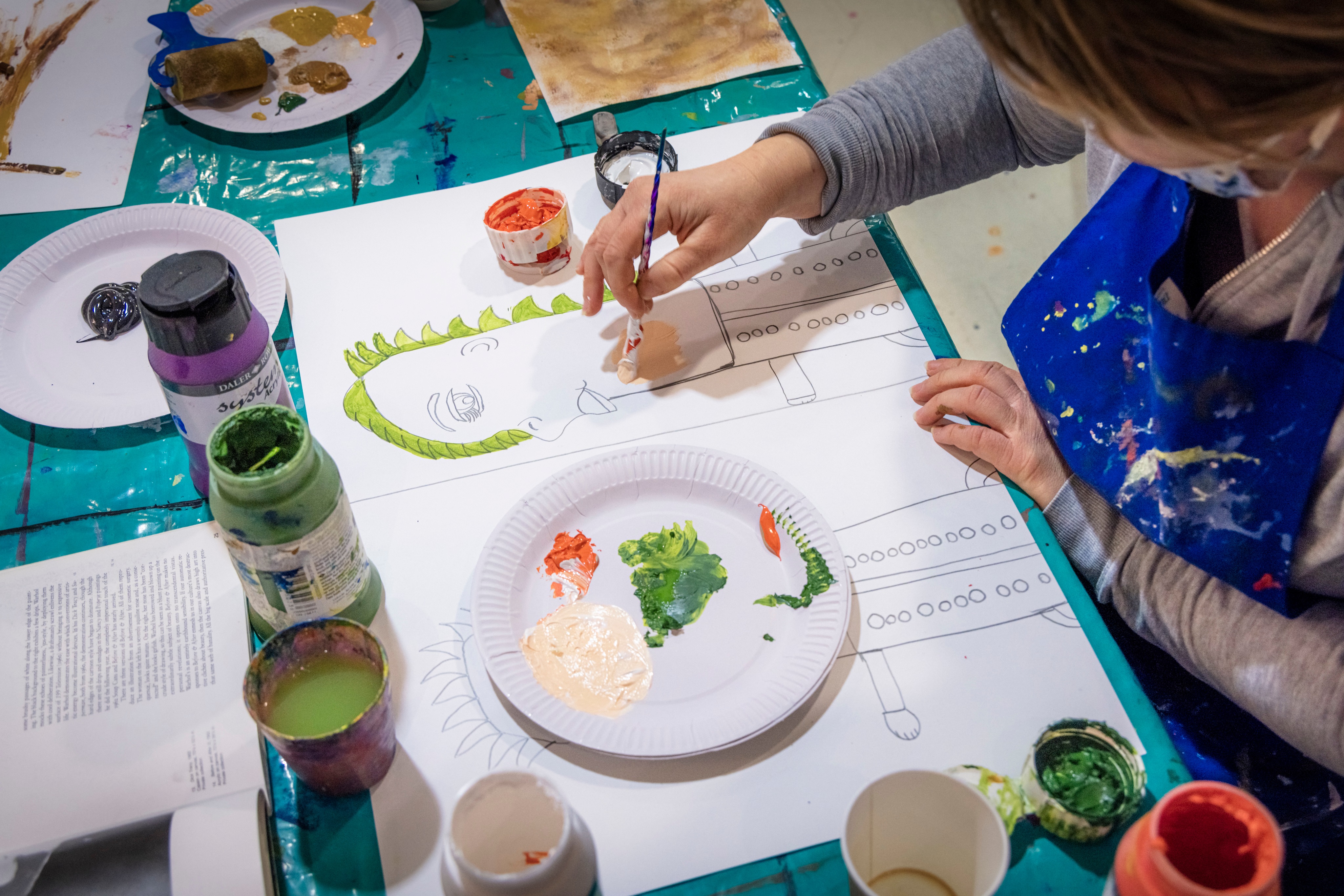 © Chris Ison
© Chris Ison
Tell us about a recent project that the Community Programme has worked on.
We recently hosted a symposium event at the Gallery titled ‘Creating Community: Exploring Values led Engagement’. This was a result of reflecting on the success of the past 21 years of the Community Programme. It gave us an opportunity to invite speakers and delegates from other organisations to share their experiences and discuss best practice in the sector. A highlight of the day was seeing our team of Community Programme Ambassadors sharing their firsthand experiences of the programme with the delegates from around the country and beyond.
Another recent development has been how we have expanded our offer to meet the needs of younger people. We noticed that the Community Programme was mostly attracting people over 25 and that younger people with support needs wanted to be involved and meet other artistic people of a similar age.
We introduced a weekly 18-25s session which the young people themselves named the YPA’s (Young Pallant Artists). This weekly group is led by an artist facilitator who encourages the group to pursue their own interests and discover new ideas. We are excited about the future of this group as they are about to embark on a project that will result in a co-curated exhibition in the Gallery’s Print Room next year.
What challenges have you faced during this programme?
One of our main challenges is also closely related to one of our key strengths – our long-term offer and the fact that people choose when it is right for them to leave the programme. Participants generally stay with the programme for around 5 years but we do have some who have been with us for 20! This means we have a long waiting list and all our sessions are at maximum capacity. We also have limited physical space in a shared studio so we don’t have a chance to provide more sessions, which makes this even harder. This means our artists can’t always attend as much as they would like and it can take a while for prospective members to reach the top of the waiting list.
Another challenge is ensuring that the people who need the programme the most find out about us. We must make sure we are communicating effectively and frequently with other local organisations in the area, who can help us spread the word to the right people who want to pursue an art interest who currently don’t have an outlet like our programme.

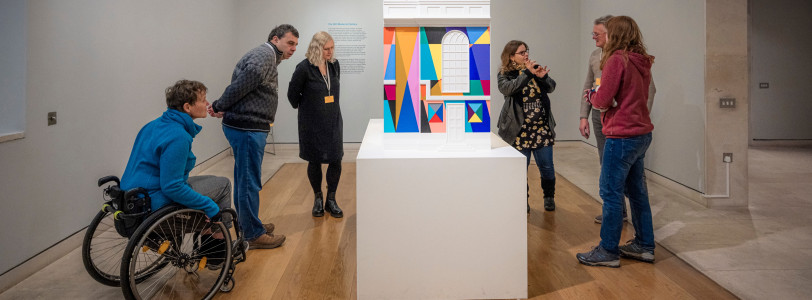

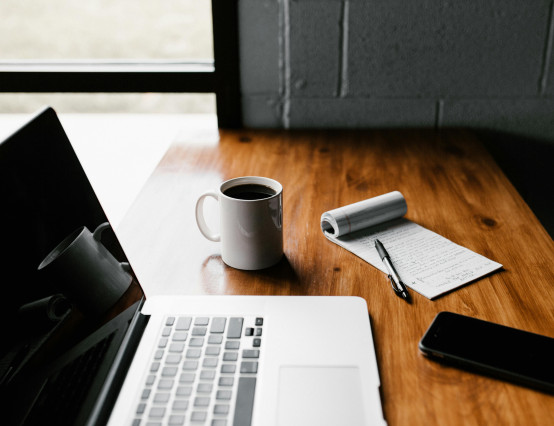

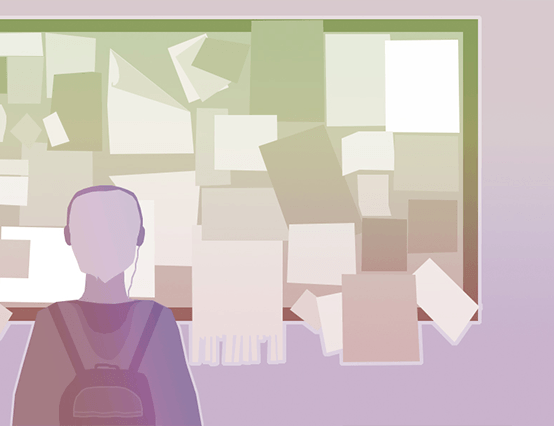


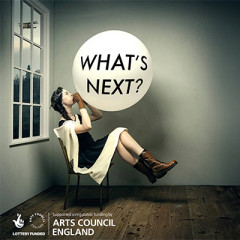
0 Comments